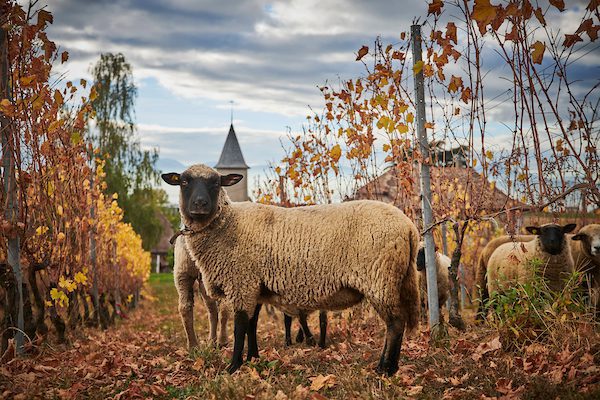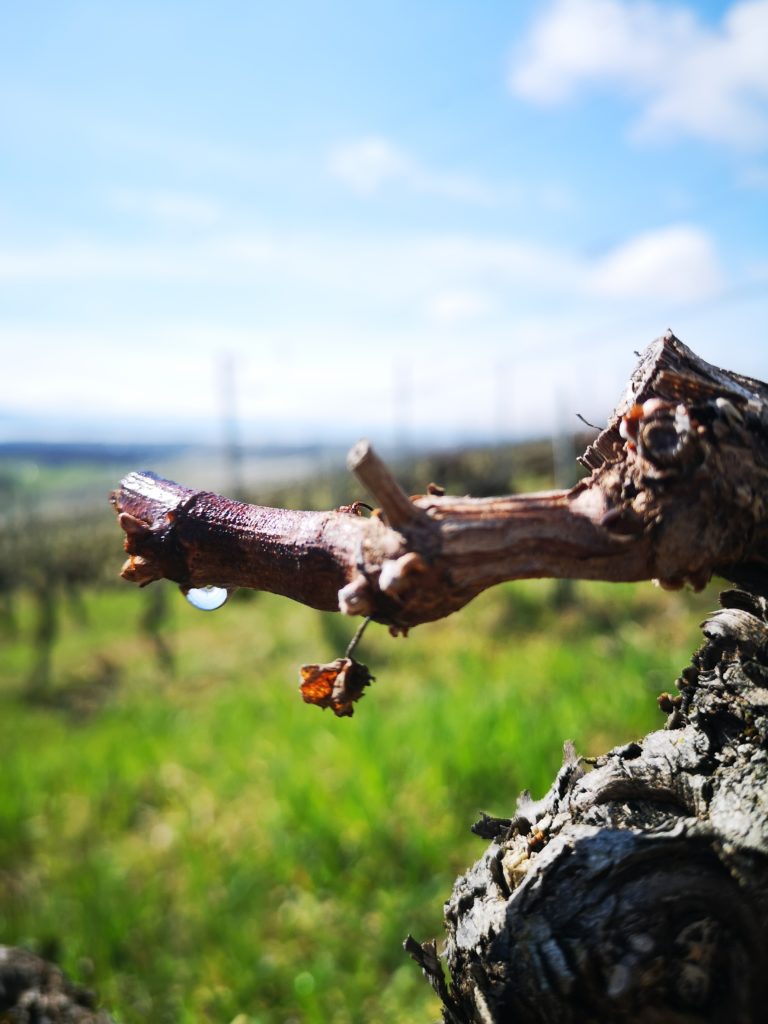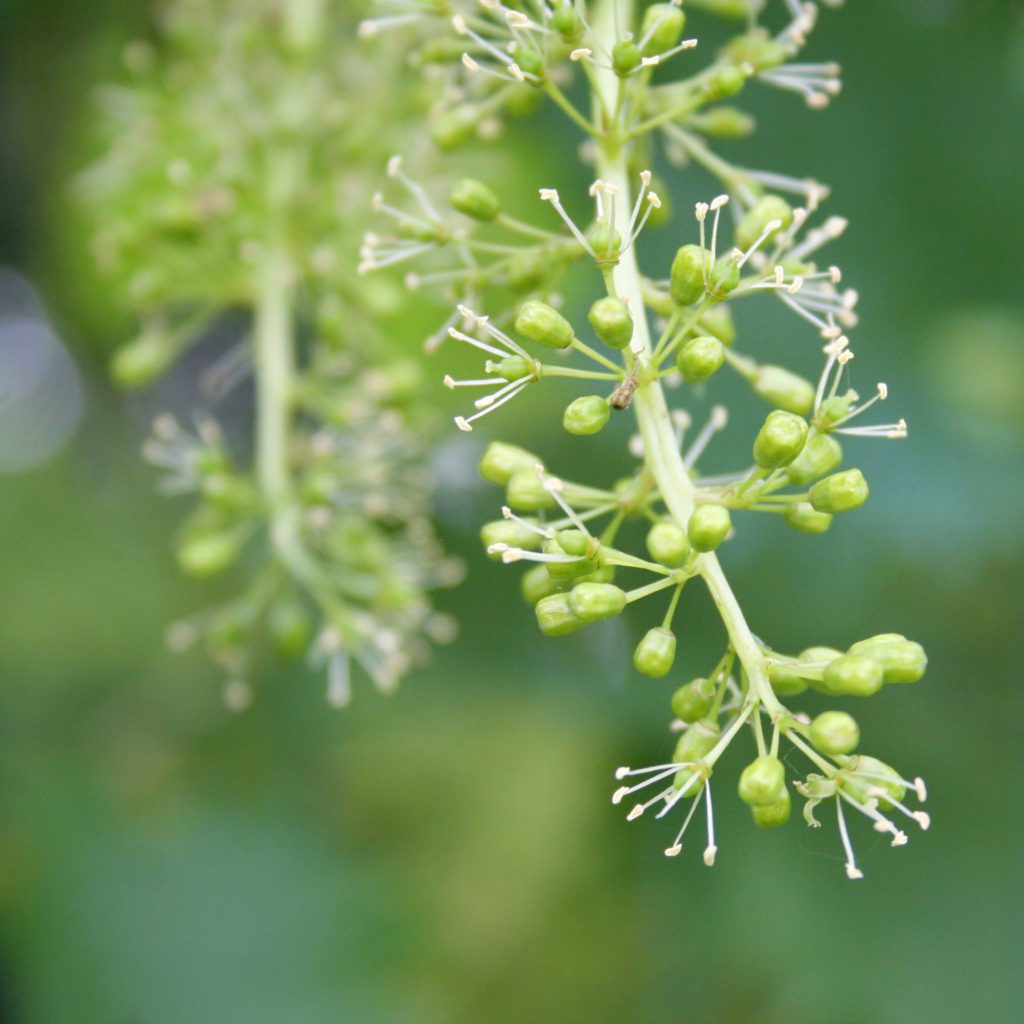The vine
The culture of the vine in our wine region of La Côte.
A living soil, vines full of vitality
Our commitment
To produce a wine in the respect of the environment
and to guarantee an irreproachable quality, such is our credo
If it is true that Swiss organic viticulture is in full expansion, the commitment of the winegrowers reflects much more than a simple passing fad. The approach is global, for a living soil and resistant vines, which the taste buds do not fail to appreciate.
Consumer awareness of the quality of organic wine has only increased. Today, it is not uncommon for organic wine to be a predominant purchasing criterion.
Organic wine, a great opportunity for the wine region of La Côte.


On La Côte, the relatively low slope allows an easy mechanization of the plots. Cave de La Côte has the ambition to become a regional example of organic farming. The winery is committed with its partners to move towards natural processes and cycles respecting the entire chain of biodiversity.
Valorize the richness of nature in order to taste authentic wines.
Our organic labels
In Switzerland, there are many labels guaranteeing various quality criteria for wine.
Depending on their commitment and the possibilities of the soil, our winegrowers who must cultivate their entire domain organically, undergo controls and benefit from the support of the winery to meet the specifications of the organic. Here is an overview of the labels of our wines.

The Bud label is focused on a comprehensive organic agriculture of the farm and producing foodstuffs that are 90% made or produced in Switzerland. The criteria exclude the use of synthetic pesticides and unnecessary additives.

Products from the two-year transition period from conventional to organic production bear the conversion bud. The guidelines and controls that apply during the conversion period are the same as for Bud products.

The IP-SUISSE association is committed to ensuring that its farmers and winegrowers can make a living from their work and that they are fairly remunerated for the various additional services they provide in the service of sustainable agriculture.
From the moraine floor of the Rhone glacier
Situation of La Côte
From the gravelly soils near Lake Geneva to the heavy soils at the foot of the Jura
If the region of La Côte is mostly occupied by the three traditional grape varieties, there is a real revival and a beautiful audacity… For a small area in comparison with the rest of the world, the diversity of terroirs is important.
There are more than thirty grape varieties, both indigenous and newcomers, as well as unique creations from the region. To Chasselas and the familiar white cousins of our regions, from Chardonnay to Viognier, has been added the Doral, derived from the first two.
As for the reds, the range is even wider and more spectacular: to the traditional Pinot and Gamay have been added in recent years Gamaret and Garanoir, then Merlot and Cabernet Franc, which are not very frequent until now in our climates. Servagnin, an ancient variety, has been reintroduced in recent years. Finally, the Divico and Gallotta varieties are among the newcomers.

Creators of discoveries
An innovative viticulture
A real qualitative awakening hailed by observers and rewarded by numerous awards

At Cave de La Côte, vinification is carried out at the two sites in Nyon and Tolochenaz. Finesse, precision and flexibility are more than ever the watchwords, thanks to modernized installations which have notably allowed us to gain in precision in terms of temperature control.
In this way, we ensure the sustainability of the vine and wine industry in our region and for our producers.
The elaboration of wines shows a real regional dynamism, as evidenced by the numerous wines awarded during national or international competitions. New grape varieties and innovative cultivation methods are tested in partnership with Agroscope researchers. Working in partnership with the Changins Research Institute of Agronomy and the Wine School, Cave de La Côte plays a leading role in this field.
The seasons day by day
The cycle of the vine

After the leaves of the vines have fallen, the sap has descended into the roots. During the winter months, the vine enjoys a well-deserved rest, it is the dormancy…

The manual pruning is the main activity of the winter during the vegetative rest of the vine when the sap does not circulate anymore. The vine must be pruned to produce more fruit than wood.

At the end of February, the vine comes out of its sleep and the seasonal cycle of the vine can start again: The sap circulates in the plant. Following the pruning, the wounds of the vine are not healed and when the sap points at the end of the pruning, we say of the vine that it cries.

The buds that appear along the shoots swell little by little. They open up and reveal a young shoot. We call budburst the moment when the protective scales spread to reject the bud.

The leaves begin to develop, they unfold and open to the sun’s rays. Thanks to them, photosynthesis can take place and allow all the biochemical reactions to occur.

The heat and the sun help the timid white flowers to appear in the vineyards. The few hundred flowers are already arranged in clusters, which leaves all the walkers wondering about the future of these flowers.

The flowers fade, those fertilized give way to the fruit: the grape. When it appears completely, we say that the grape is tied. Small in size, dark green in color and containing between 1 to 4 seeds, the bunches will not stop growing from that moment.

The grapes grow slowly, remain hard and keep this color during their development, so the fruit set is finished. The berries are well detached from each other. We speak about the stage of the pea.

After fruit set, the grape berries grow. When the grapes finally touch each other, the stage of cluster closure is reached.

The winegrower cuts the leaves that hide the grapes from the sun so that they receive the best possible sunlight. Depending on the region of the world, the leaves are removed to a greater or lesser extent so that the grapes do not burn in the sun.

The grapes are now in a phase of color change: the veraison will last between 8 and 15 days. The color changes from green to pink, then from blue-red to black for the colored varieties and from green to translucent or yellowish for the white varieties.

Ripening, which lasts between 35 and 55 days, is a crucial period for the vine and the character of the vintage. As the grapes ripen, they gain in sugar and lose in acidity while their skin becomes thinner.
Harvest
The grapes are ready to be harvested, but once again, the vagaries of the weather can complicate the task, and everything can happen within a few hours. The choice of the date of the harvest is made by the oenologist according to the state of the sky and the predisposition of the grapes. It is a very active period of work for all the teams from the vineyard to the cellar, a physically demanding moment that is often accompanied by conviviality, anecdotes and hopes for the vintage.
